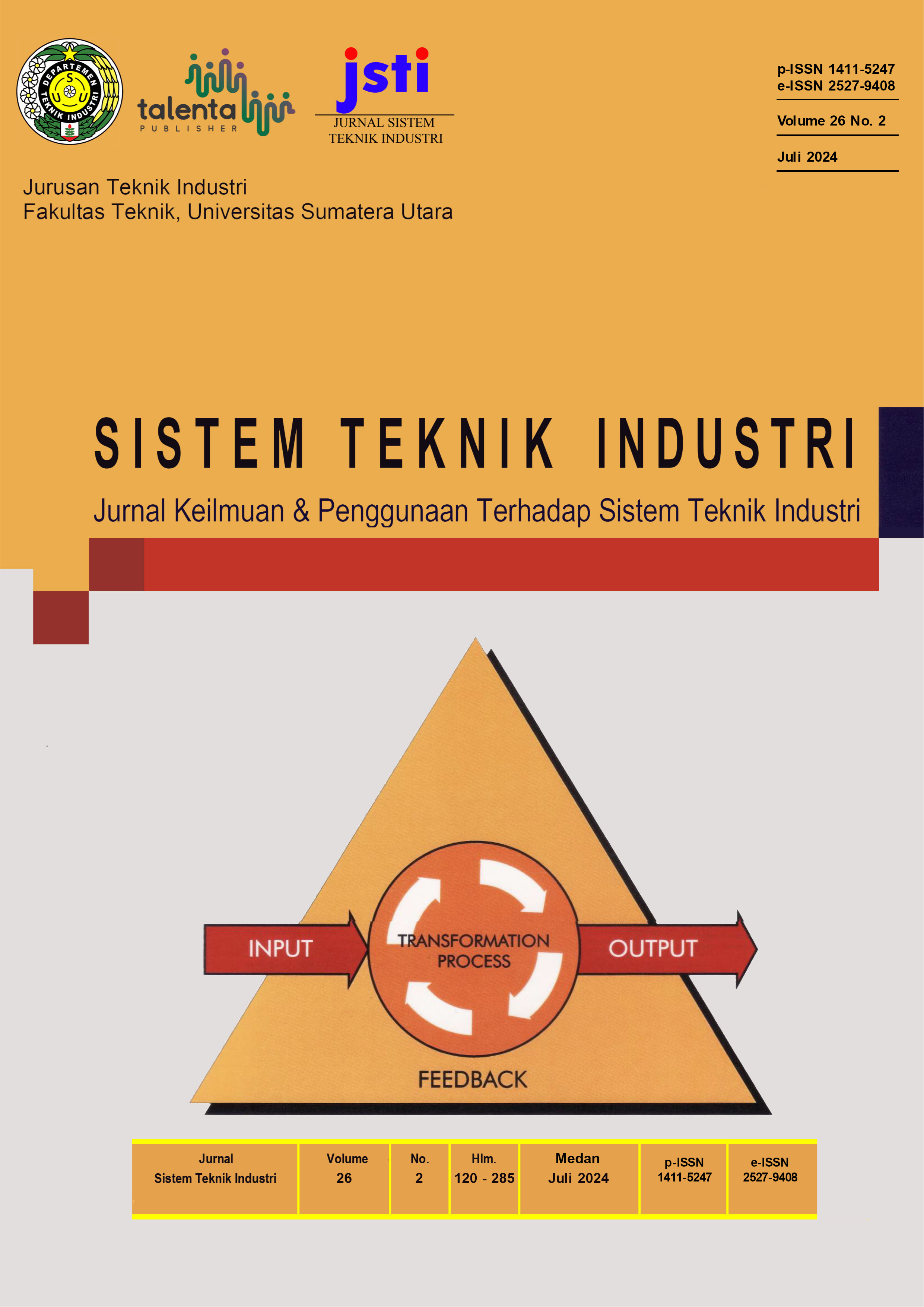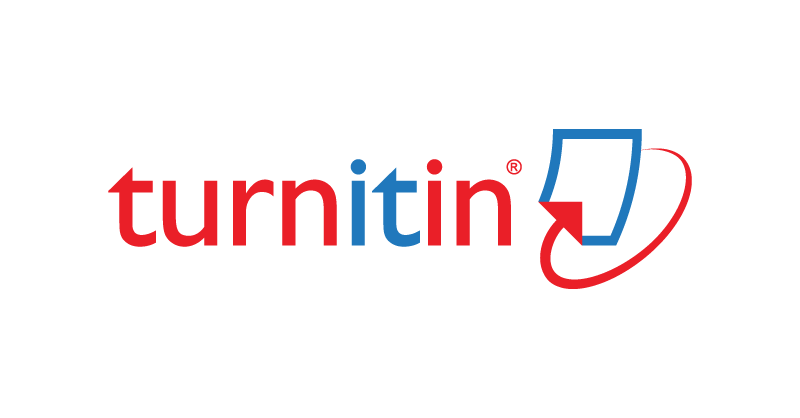Lathe Workshop Layout Design Analysis Using Blocplan and SLP Methods
DOI:
https://doi.org/10.32734/jsti.v26i2.16482Keywords:
ARC, BLOCPLAN, Facility Layout, SLPAbstract
An inappropriate layout can result in excessive material movement and increase costs significantly. Therefore, it is important to carefully plan the facility layout so that related activities can be coordinated according to the applicable departments and workflows. Sinar Abadi Lathe Workshop is a company engaged in the machining business, especially in the lathe process. This process involves working with materials by cutting or modifying workpieces using a lathe. This research analyses the layout of the lathe workshop using the SLP and BLOCPLAN methods in order to reduce moving costs, and optimism the use of space in the context of the lathe workshop. The implementation of the BLOCPLAN method in the lathe shop showed labor efficiency with less labor required per production cycle compared to the initial layout. However, a complete change from the original layout may result in higher moving costs. This highlights the importance of cost considerations in choosing a layout method. For layout changes with minimal moving costs, the SLP Layout is proposed as a cost-efficient alternative, as it considers various factors, including distance, material transportation, and labor requirements in planning the layout.
Downloads
References
R. Muther, Systematic Layout Planning. Cahners Books, 1973.
Y. Putra, F. D. Sitania, and A. Profita, “Perancangan tata letak fasilitas pada bengkel bubut dan las di CV. Raihan Teknik,†ITSA Jurnal Industri & Teknologi Samawa, vol. 3, no. 1, pp. 1–10, 2022.
M. M. Rais, “Perencanaan ulang tata letak fasilitas produksi menggunakan metode systematic layout planning pada pabrik kelapa sawit di PT Asam Jawa,†M.S. thesis, Universitas Medan Area, Medan, Indonesia, 2021.
H. Imam et al., “Perbaikan tata letak fasilitas produksi pabrik garmen CV XYZ dengan metode Blocplan,†ITSA Jurnal Industri & Teknologi Samawa, Jul. 2022.
A. F. Faridhatul, “Analisis tata letak fasilitas dengan menggunakan metode Blocplan pada ruang produksi masker PT Safelock Medical Jepara,†B.S. thesis, Universitas Diponegoro, Semarang, Indonesia, 2023.
N. A. Fitri and K. Yusup, “Perancangan ulang tata letak fasilitas dengan metode ARC guna memaksimalkan proses produksi pada pembuatan alas karet sandal (CV. Nugraha Rubber Ampera),†Jurnal Industrial Galuh, vol. 5, no. 1, 2023.
K. Sari and F. O. Hocaoglu, “Facility layout problem with alternative facility variants,†Applied Sciences, vol. 13, no. 8, 2023.
J. Kim and Y. Park, “A facility layout algorithm for logistics scenarios driven by dynamic data,†Applied Sciences, vol. 13, no. 12, 2023.
J. A. Shubin and H. Madeheim, “Systematic layout planning,†Management General, vol. 1, pp. 45–60, 1965.
L. Gozali and A. Kusuma, “Redesign of facility layout with systematic layout planning, pairwise exchange, and lean manufacturing method at PT Adhi Chandra Jaya,†International Journal of Advanced Research in Engineering and Technology, 2023.
J. Balakrishnan and C. H. Cheng, “Lean layout design: A case study applied to the textile industry,†International Journal of Advanced Research in Engineering and Technology, 2023.
I. A. Puspita, M. Iqbal, D. Pratami, and A. Pratomo, “Production facility layout design using Blocplan algorithm,†Advanced Science Letters, vol. 23, no. 5, pp. 3917-3920, 2017.
H. Henni et al., “Redesign the layout of production facilities at a garment company using the BLOCPLAN method to optimize material handling,†in Proc. International Conference on Multidisciplinary Research for Sustainable Innovation, 2024, vol. 1, no. 1, pp. 358-368.
A. H. Adiningih and M. Achmad, “Planning of production facilities layouts of home industry of Cabalu Smoked Salted Egg in Bone District,†in *BIO Web of Conferences*, 2024, vol. 96, p. 07007.
R. Muther, Systematic Layout Planning. Management General, 1973.
J. A. Tompkins, J. A. White, Y. A. Bozer, and J. M. A. Tanchoco, Facilities Planning, no. 1. John Wiley & Sons, 2010.
Downloads
Published
How to Cite
Issue
Section
License
Copyright (c) 2024 TALENTA Publisher Universitas Sumatera Utara

This work is licensed under a Creative Commons Attribution-ShareAlike 4.0 International License.
The Authors submitting a manuscript do so on the understanding that if accepted for publication, the copyright of the article shall be assigned to TALENTA Publisher Universitas Sumatera Utara as the publisher of the journal.
Copyright encompasses the rights to reproduce and deliver the article in all forms and media. The reproduction of any part of this journal, its storage in databases, and its transmission by any form or medium will be allowed.



















